FAQ: How Do I Protect Myself from Domestic Violence in California
To best answer your question, "How Do I Protect Myself from Domestic Violence in Orange County": If you or your children are victims of domestic violence in Orange County, California, you need to get yourself and your children out of the situation as soon as possible. If you are currently in danger, call 911 now. You may contact the police, an attorney, your local domestic violence shelter, child or adult protective services, the National Domestic Violence Hotline and/or a loved one for assistance, guidance and protection.
Domestic violence is abuse by a person with whom the victim has a close relationship. Abuse can include sexual assault, physical harm, or threats, harassment, stalking, or destroying someone’s personal property.
Protecting yourself and your children from domestic violence is not always easy, but there are things you can do.
Create a Safety Plan
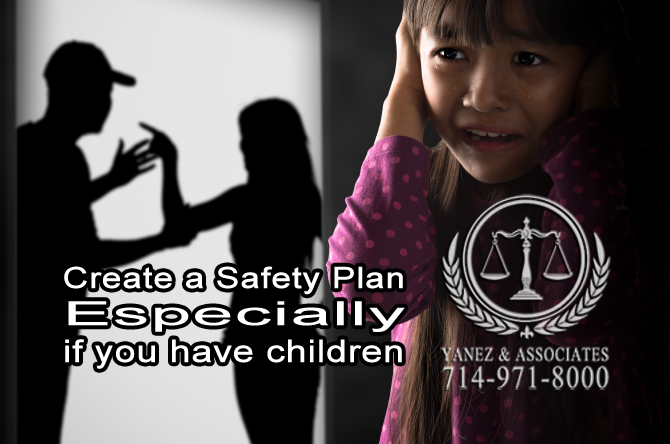
Sometimes, having a safety plan is the best way to prepare your family in case that domestic violence and abuse become an issue. Especially if you have children, having a plan that they can follow can help you have more control over an intense situation. If you have questions about how to create a plan, try the National Domestic Violence Hotline.
Plan for an attack. If an attack happens, you and your children should immediately leave your home, regardless of the current time. If you can, stay with a friend or loved one, get a hotel, or stay at a domestic violence shelter.
• If you are worried about a domestic violence attack, have a safe place arranged so that you, your children, and your hosts know you are coming;
• Have a code word with your children, family, friends, or neighbors, so that they know to call the police if you say it;
• If an attack happens, protect and defend yourself and your children, and take photos of any injuries once you are in a safe place;
• If you are unable to protect yourself, make as much noise as possible;
Plan to Live Safely on Your Own
• You will need financial security, so open a savings account in your own name as soon as you can. Use a PO box or a work address rather than an address your abuser shares or has access to;
• Choose a person you trust to hold on to a copy of important documents and keys to your home. Prepare to leave home quickly, and have things you may need outside of the home;
• Have a plan to get out quickly and safely. If you cannot take your children with you, contact an attorney immediately and take actions to remove them from the home as soon as possible;
• In your new home, keep all doors and windows locked, especially at night and when you are not home;
• Have mail sent to a PO box, request that your phone number be unlisted, and keep the number of your lawyer, the police and/or your local domestic violence hotline handy at all times;
• Teach your children about safety in and out of the home, when you are around and when you are not;
Take Legal Action to Protect Yourself
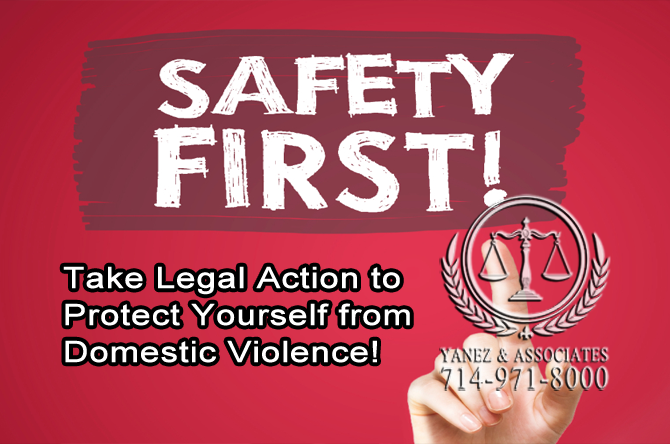
There are several types of restraining orders that you can get, and you should have them, especially if domestic violence has the potential to happen again.
There are several types of restraining orders that you can get, and you should have them, especially if domestic violence has the potential to happen again.
Depending on the type of abuse you are facing, you can get a restraining order in one of the following categories. The protected people, or protected persons, are the people that the restraining order is supposed to protect. Anyone protected by a restraining order will be named in the order. The restrained person is the person who is prevented from taking certain actions or being in certain places by the order.
Types of Restraining Orders
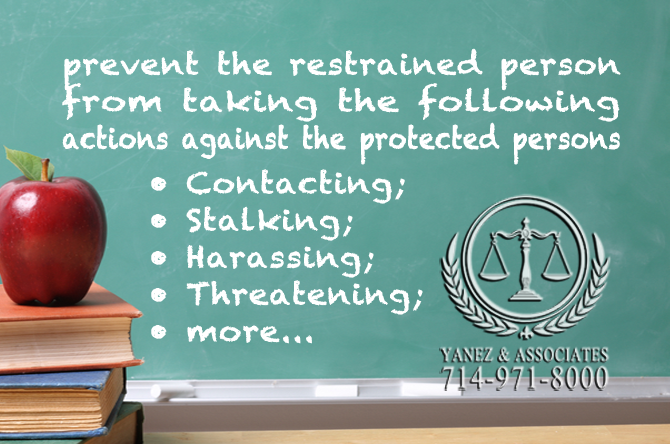
Personal Conduct Orders - A personal conduct order is intended to prevent the restrained person from taking certain actions, named in the restraining order. A personal conduct order can prevent the restrained person from taking the following actions against the protected persons.
• Contacting the protected persons in any way, including calling, sending messages by phone or over the internet, through the mail, etc.;
• Attacking or touching the person, including hitting, pushing, battering, sexually assaulting, etc.;
• Stalking;
• Harassing;
• Threatening;
• Destroying the personal property of the protected persons;
• Any other actions that the judge deems appropriate or necessary.
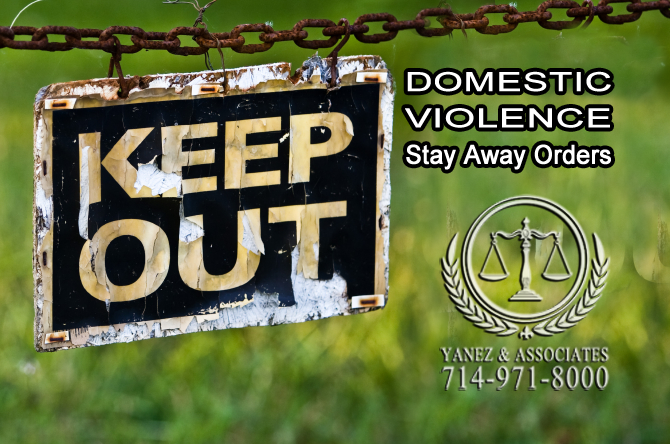
Stay Away Orders - A stay away order prevents a restrained person from coming within a certain distance of the protected persons and specific locations that the protected persons spend time, including the following:
• The protected person’s home,
• The protected person’s school or workplace,
• The protected person’s vehicle,
• The protected person’s children, family, or children’s places of school or childcare,
• Any other important places that the protected person spends time.
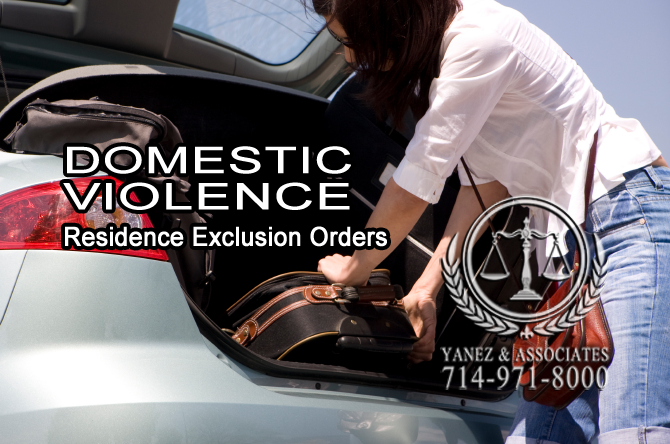
Residence Exclusion Orders - Also called a kick out order, a residence exclusion restraining order requires the restrained person to move out of a shared residence, taking only personal clothing and belongings until a court hearing can be held.
California Domestic Violence Restraining Orders
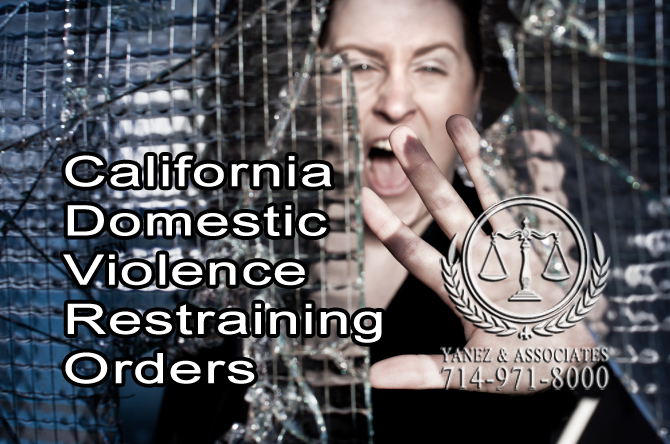
A domestic violence restraining order may be issued if you have been abused by a person with whom you have a close relationship. This includes spouses, registered domestic partners, divorced, separated, or dating partners, people who share a child or who live together, or close relatives.
You can obtain several types of restraining orders, depending on the need, urgency, and timing of the court date.
An Emergency Protective Order can be issued 24 hours a day to any requesting police officer. They only last up to seven days, which should be enough time to obtain a Temporary Restraining Order. These orders last up to 25 days, and are intended to protect the protected person until a hearing can be held. At a hearing, a Permanent Restraining Order may be issued, and can last up to three years, or more depending on the situation.
Contact an OC California Domestic Violence Attorney Today
If you’re a victim of domestic violence, it is critical that you contact an attorney and obtain a domestic violence restraining order as soon as possible to protect your family. Contact Yanez & Associates today to schedule your free initial consultation.
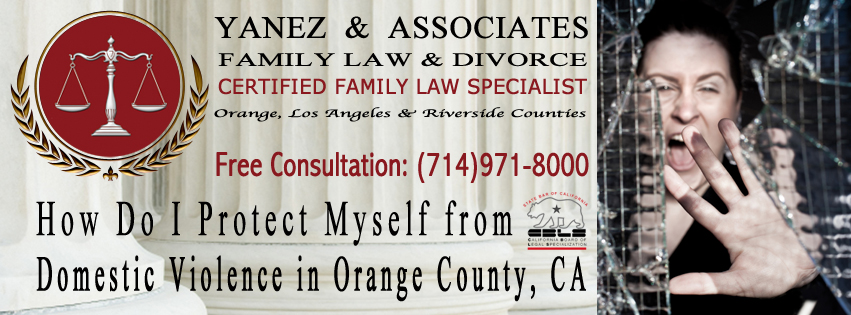
Contact an OC California Domestic Violence Attorney Today to learn How you can Protect yourself and family from Domestic Violence








